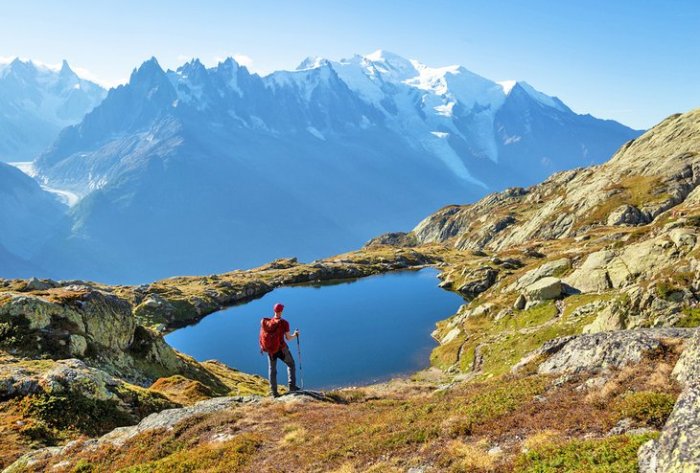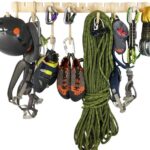Hiking Europe: Conquer breathtaking trails, from the majestic Alps to hidden coastal gems. This isn’t just a guide; it’s your passport to unforgettable adventures across Europe’s diverse landscapes. We’ll uncover the best regions for every skill level, equip you with essential planning tips, and ensure you hike safely and sustainably. Get ready to experience the thrill of exploration and the beauty of nature on foot.
Imagine yourself traversing ancient pathways, scaling towering peaks, and breathing in the crisp mountain air. This guide will help you plan the perfect European hiking trip, whether you’re a seasoned adventurer or a beginner taking your first steps on the trail. We’ll cover everything from choosing the right region and packing your bag to navigating transportation options and staying safe in the wilderness.
Let’s embark on this journey together!
Planning a European Hiking Trip: Hiking Europe

Embarking on a European hiking adventure requires meticulous planning to ensure a safe, enjoyable, and memorable experience. From selecting the perfect trails to packing the right gear, careful preparation is key to maximizing your time in the stunning landscapes Europe has to offer. This section will guide you through the essential steps of planning your trip, focusing on itinerary creation, gear selection, and transportation options.
Sample Ten-Day Hiking Itinerary in the Alps
A well-structured itinerary is crucial for a successful hiking trip. This sample itinerary focuses on the Alps, offering a balance of challenging hikes and opportunities for relaxation. Remember to adjust this itinerary based on your fitness level and preferences. Always check weather conditions and trail closures before embarking on any hike.
| Day | Location | Hiking Route Description | Accommodation |
|---|---|---|---|
| 1 | Chamonix, France | Arrival in Chamonix, acclimatization walk around town. | Hotel in Chamonix |
| 2 | Chamonix – Lac Blanc | Moderate hike to Lac Blanc, approximately 4-5 hours round trip, enjoying stunning views of Mont Blanc. | Gite or hotel near Lac Blanc (pre-booking essential) |
| 3 | Tour du Mont Blanc (TMB) – Section 1 | Start of the TMB, a challenging multi-day hike. This section covers approximately 15km with significant elevation gain. | Refuge (mountain hut) along the TMB route. |
| 4 | Tour du Mont Blanc (TMB) – Section 2 | Continue along the TMB, another challenging day with varied terrain and breathtaking scenery. Approximately 18km. | Refuge along the TMB route. |
| 5 | Tour du Mont Blanc (TMB) – Section 3 | Complete a section of the TMB, adjusting the distance based on your fitness level. Aim for 12-15km. | Refuge or hotel in a nearby village. |
| 6 | Rest Day – Courmayeur, Italy | Relaxation day in Courmayeur, exploring the town and enjoying local cuisine. | Hotel in Courmayeur |
| 7 | Aosta Valley Hike | Moderate hike in the Aosta Valley, exploring less crowded trails and enjoying the valley’s charm. Approximately 8-10km. | Hotel in Aosta Valley |
| 8 | Zermatt, Switzerland – Gornergrat Bahn | Travel to Zermatt and ascend Gornergrat by train for panoramic views of the Matterhorn. | Hotel in Zermatt |
| 9 | Zermatt – Hike to Sunnegga | Moderate hike from Zermatt to Sunnegga, accessible by cable car. Enjoy stunning Matterhorn views. | Hotel in Zermatt |
| 10 | Departure from Zermatt | Travel from Zermatt to your next destination or home. | N/A |
Essential Gear and Equipment Checklist
Proper gear is paramount for a safe and comfortable hiking experience. This checklist categorizes essential items to ensure you have everything you need. Remember to check weather forecasts and adjust your packing accordingly. Lightweight and durable materials are highly recommended.
- Clothing: Moisture-wicking base layers, insulating mid-layers (fleece or down jacket), waterproof and windproof outer shell, hiking pants or shorts, warm hat, gloves, hiking socks (multiple pairs).
- Footwear: Sturdy hiking boots (broken in before the trip), comfortable walking shoes for non-hiking days, waterproof gaiters (optional but recommended).
- Safety: First-aid kit (including blister treatment), sunscreen, sunglasses, head lamp or flashlight, whistle, multi-tool or knife, trekking poles (optional but helpful).
- Navigation: Detailed maps of your hiking routes, compass, GPS device or smartphone with offline maps and navigation apps.
Transportation Options for European Hiking Trails, Hiking Europe
Reaching and navigating European hiking trails involves various transportation options, each with its own cost and efficiency considerations. Careful planning can save you time and money.
- Trains: Efficient and scenic, particularly for long distances. Rail passes can offer cost savings for extensive travel. However, trains may not always reach trailheads directly, requiring additional transportation.
- Buses: Cost-effective option for reaching smaller towns and villages near hiking trails. However, buses can be slower and less frequent than trains.
- Rental Cars: Offer flexibility and direct access to trailheads, but can be expensive, especially with parking fees. Driving in mountainous areas can be challenging.
- Ride-sharing services: Convenient for shorter distances and airport transfers. However, availability and cost can vary depending on location.
From the iconic trails of the Alps to lesser-known hidden gems, hiking in Europe offers an unparalleled adventure. This guide has armed you with the knowledge and resources to plan a safe, sustainable, and unforgettable trip. Remember to prioritize safety, respect the environment, and savor every breathtaking moment. So, pack your bags, lace up your boots, and prepare to discover the magic of hiking across the continent.
Your next great adventure awaits!

